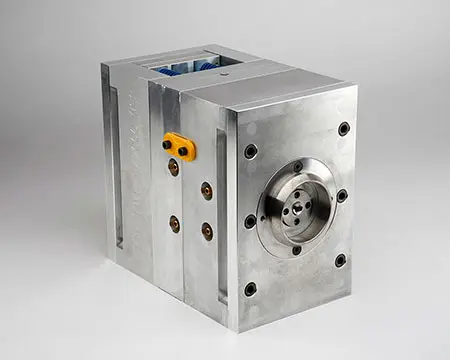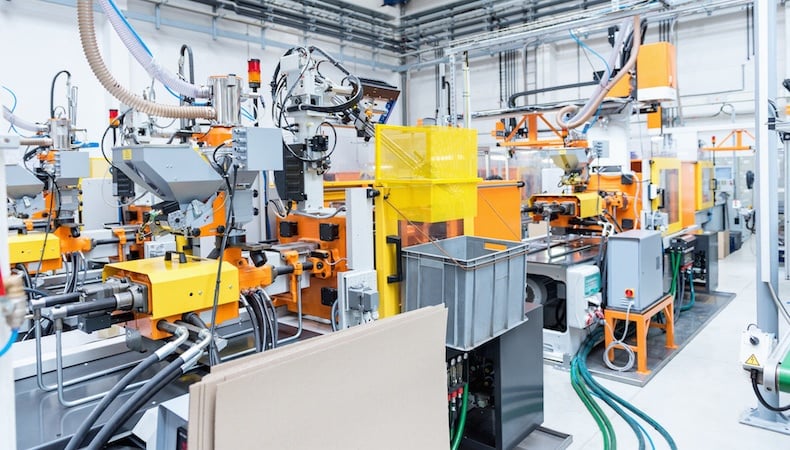Why Plastic Injection Molding Is Important for Accuracy and Durability
Why Plastic Injection Molding Is Important for Accuracy and Durability
Blog Article
Understanding the Essentials of Plastic Shot Molding Procedures
Plastic injection molding functions as a foundation of modern manufacturing, providing a methodical method to producing intricate parts with precision. This process not just incorporates the fundamental steps of melting and infusing materials into mold and mildews however likewise entails a nuanced understanding of different influencing variables, such as temperature level and stress. As industries progressively demand effectiveness and high quality, the intricacies of this methodology become more vital. Discovering these necessary components could disclose exactly how even small modifications can bring about considerable improvements in manufacturing results, elevating concerns concerning the possibility for development in this well-known procedure.
What Is Plastic Shot Molding?
Plastic injection molding is an extensively used production process that transforms polycarbonate and thermosetting products right into precise and intricate shapes. This technique is preferred for its ability to create high volumes of similar components with phenomenal accuracy, making it a vital method in different sectors, including auto, durable goods, and clinical devices.
The procedure entails thawing the picked plastic product and infusing it right into a mold and mildew under high pressure. The mold, made to the specifications of the preferred component, permits the liquified plastic to take shape as it strengthens and cools down. Once the product has hardened, the mold is opened up, and the finished element is ejected.
Plastic injection molding offers numerous benefits, consisting of minimized waste, consistency in production, and the ability to integrate detailed designs that may be challenging with other producing techniques. Furthermore, it supports a wide series of materials, each supplying special buildings that can be customized for particular applications. As sectors continue to introduce, plastic shot molding remains at the leading edge, making it possible for the development of sophisticated products that satisfy progressing customer demands.
The Shot Molding Refine
The injection molding process is an innovative method that entails a number of vital stages to produce premium plastic parts. At first, plastic pellets are fed into a heated barrel where they are thawed right into a thick liquid. This molten plastic is then infused under high pressure into a precision-engineered mold and mildew, which shapes the material right into the preferred type.
When the mold and mildew is filled, the plastic is allowed to cool down and strengthen, taking the shape of the mold and mildew cavity. Cooling time is crucial, as it influences the cycle time and the last residential or commercial properties of the shaped component. After adequate air conditioning, the mold and mildew opens, and the ended up element is expelled using ejector pins.

Materials Utilized in Shot Molding
Different materials can be used in the injection molding process, each offering distinct residential properties that provide to specific applications. The most commonly used products consist of thermoplastics, thermosetting plastics, and elastomers.

Thermosetting plastics, like epoxy and phenolic materials, undertake a chemical change during the healing process, leading to a stiff, inflexible structure. These products are suitable for applications click here to find out more needing high warm resistance and architectural integrity, typically made use of in electrical insulators and vehicle parts.
Elastomers, including silicone and resource rubber-based products, provide versatility and strength. Their one-of-a-kind homes make them ideal for applications that demand elasticity, such as seals and gaskets.
Furthermore, specialized materials like bio-based plastics and composites are acquiring traction for their ecological advantages and enhanced efficiency characteristics, broadening the range of shot molding applications in different markets. Comprehending the properties of these materials is essential for selecting the suitable kind for certain tasks.
Benefits of Shot Molding
Injection molding sticks out as an extremely effective manufacturing procedure that supplies countless benefits for generating intricate parts with precision. Among the most considerable benefits is the ability to create intricate designs that would be tough or difficult to achieve with other methods (Plastic Injection Molding). The procedure permits detailed attributes and limited resistances, guaranteeing top quality components
In addition, shot molding is understood for its rapid manufacturing capabilities, making it an excellent selection for high-volume manufacturing. As soon as the mold and mildew is developed, parts can be generated swiftly, decreasing lead times and increasing general productivity. This performance not just lowers manufacturing costs yet likewise provides an affordable edge out there.
The adaptability of materials made use of in injection molding additionally enhances its allure. A vast array of thermoplastics and thermosetting polymers can be employed, enabling producers to pick materials that finest fulfill their certain requirements, including toughness, flexibility, and warmth resistance.
In addition, the process lessens waste, as excess material can usually be recycled and recycled. This sustainability aspect adds to a lowered environmental impact, making shot molding a liable manufacturing choice. Generally, the advantages of injection molding make it a favored technique for lots of sectors.
Factors Affecting Product High Quality
While various aspects can affect item top quality in injection molding, comprehending these aspects is critical for attaining optimum outcomes. Trick facets consist of product selection, refining criteria, and mold and mildew style.
Product choice plays an essential duty, as different polymers exhibit one-of-a-kind residential properties that influence flowability, toughness, and thermal security. Insufficient product selection can cause problems such as bending or incomplete filling.
Handling parameters, including pressure, cycle, and temperature time, need to be meticulously regulated. Variants in these setups can lead to inconsistencies partially dimensions and surface finish. Excessively high temperature levels may cause destruction of the polymer, while inadequate pressure can result in short shots.
Mold and mildew design is equally vital, as it establishes the circulation of the molten plastic and the cooling procedure. Inadequately designed molds might lead to uneven cooling rates, causing recurring tensions and dimensional mistakes.
Conclusion
In conclusion, plastic shot molding offers as a critical production procedure that enables the efficient manufacturing of top quality elements. Mastery of the shot molding procedure, consisting of the understanding of products and the impact of various factors on product top quality, is essential for accomplishing optimal outcomes. The benefits of this technique, such as cost-effectiveness and design adaptability, more underscore its importance across multiple sectors, solidifying its condition as a preferred selection for high-volume production.
Plastic injection molding offers as a foundation of contemporary manufacturing, supplying a methodical approach to producing complicated elements with precision.Plastic shot molding supplies several benefits, consisting of lowered waste, uniformity in production, and the ability to incorporate detailed styles that might be testing with other making methods (Plastic Injection Molding). As sectors proceed to innovate, plastic shot molding remains at the center, allowing the growth of advanced items that meet evolving customer needs
The injection molding process is a sophisticated technique that includes a number of key stages to produce high-quality plastic elements.In conclusion, plastic injection molding serves as a crucial production procedure that enables the reliable manufacturing of high-grade elements.
Report this page